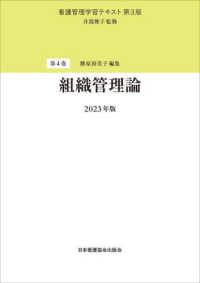Full Description
This book deals with the phenomenon of vowel harmony, a phonological process whereby all the vowels in a word are required to share a specific phonological property, such as front or back articulation. Vowel harmony occurs in the majority of languages of the world, though only in very few European languages, and has been a central concern in phonological theory for many years. In this volume, Harry van der Hulst puts forward a new theory of vowel harmony, which accounts for the patterns of and exceptions to this phenomenon in the widest range of languages ever considered.
The book begins with an overview of the general causes of asymmetries in vowel harmony systems. The two following chapters provide a detailed account of a new theory of vowel harmony based on unary elements and licensing, which is embedded in a general dependency-based theory of phonological structure. In the remaining chapters, this theory is applied to a variety of vowel harmony phenomena from typologically diverse languages, including palatal harmony in languages such as Finnish and Hungarian, labial harmony in Turkic languages, and tongue root systems in Niger-Congo, Nilo-Saharan, and Tungusic languages. The volume provides a valuable overview of the diversity of vowel harmony in the languages of the world and is essential reading for phonologists of all theoretical persuasions.
Contents
Preface
List of abbreviations
Part I: A new theory of vowel harmony
1: Opacity and transparency in vowel harmony
2: The RcvP model
3: Harmony as licensing
Part II: Case studies
4: Palatal harmony
5: Labial harmony
6: Aperture harmony
7: African tongue root systems: Typology
8: African tongue root systems: Case studies
9: Asian tongue root systems
10: Other cases of vowel harmony
11: Summary and further research
References
Language index
Subject index








